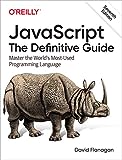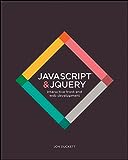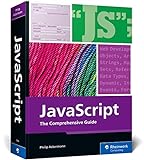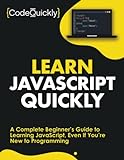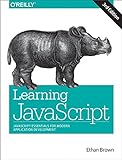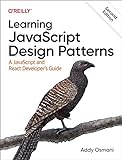In GraphQL, you can pass parameters to a child property by defining the parameters in the query that fetches the data for that property. By including the parameters in the query, you can pass them down to the child property through the resolver functions.
For example, if you have a query that retrieves a user and their posts, you can pass parameters to the posts property by including them in the query like this:
1 2 3 4 5 6 7 8 9 10 |
{ user(id: "123") { id name posts(limit: 10) { id title } } } |
In this example, the posts property of the user object accepts a limit parameter to specify the number of posts to retrieve. The resolver function for the posts property can access the limit parameter and use it to fetch the correct number of posts.
Overall, passing parameters to child properties in GraphQL involves including the parameters in the query and implementing the necessary logic in the resolver functions to handle those parameters.
What is the role of context in passing parameters to child properties in GraphQL?
In GraphQL, the context plays a crucial role in passing parameters to child properties. The context object is a way to share information across resolvers during the execution of a query. It can contain things like user authentication details, database connections, or other application-specific information.
When passing parameters to child properties in GraphQL, the context object can be used to store and access these parameters throughout the resolver chain. For example, if a user needs to pass a certain parameter to a nested field, they can include that parameter in the context object when making the initial query.
Within the resolver functions for each field, the context object can then be accessed to retrieve any necessary parameters and pass them down to child fields as needed. This allows for more flexible and dynamic parameter passing in GraphQL queries, making it easy to customize and optimize data retrieval based on specific user requirements.
What is the best way to pass variables to child properties in GraphQL queries?
The best way to pass variables to child properties in GraphQL queries is to use variables in the query itself. This allows you to pass dynamic values to the child properties while keeping the query structure clean and maintainable.
Here is an example of how to pass variables to child properties in a GraphQL query:
1 2 3 4 5 6 7 8 9 10 11 |
query GetProducts($categoryId: ID!) { category(id: $categoryId) { id name products { id name price } } } |
In this query, the $categoryId variable is defined in the query parameters and can be passed in when executing the query. This value will be used to fetch the products for a specific category.
When executing the query, you can pass the variable value like this:
1 2 3 |
{ "categoryId": "123" } |
This approach allows you to pass dynamic values to child properties in GraphQL queries without hardcoding them, making your queries more flexible and reusable.
How can you pass variables to nested fields in a GraphQL subscription?
To pass variables to nested fields in a GraphQL subscription, you can use the same syntax as for passing variables in regular queries and mutations. Here's an example of how you can pass variables to nested fields in a GraphQL subscription:
1 2 3 4 5 6 7 8 9 10 |
subscription GetPostById($postId: ID!) { postById(postId: $postId) { id title comments { id text } } } |
In this example, the GetPostById subscription takes a postId variable as an input and retrieves the post with that specific postId, as well as the comments associated with that post.
You can pass variables to this subscription when you subscribe to it by including the values for the variables in the subscription request. For example, if you are using Apollo Client, you can pass variables to a subscription like this:
1 2 3 4 5 6 |
client.subscribe({ query: GET_POST_BY_ID, variables: { postId: postId, }, }); |
This way, you can pass variables to nested fields in a GraphQL subscription to customize the data that is returned based on the variables you provide.
How can you pass query variables to nested fields in Apollo Client?
To pass query variables to nested fields in Apollo Client, you can use the variables option in the query method when defining your GraphQL query.
For example, let's say you have a query with nested fields like this:
1 2 3 4 5 6 7 8 9 |
query GetUser($userId: ID!) { user(id: $userId) { name posts { title body } } } |
To pass the userId query variable to the nested posts field, you can define the query like this in your Apollo Client code:
1 2 3 |
const { loading, error, data } = useQuery(GET_USER, { variables: { userId: '123' }, }); |
In this example, the userId variable is passed to the GET_USER query using the variables option. When the query is executed, the value of userId will be used to fetch the data for the nested posts field.
What is the advantage of using constraints to pass parameters to child fields in GraphQL queries?
One advantage of using constraints to pass parameters to child fields in GraphQL queries is that it allows for more granular control over the data that is returned. By specifying constraints at the field level, developers can filter, sort, or paginate results based on specific criteria, resulting in more targeted and efficient data retrieval.
Additionally, using constraints in GraphQL queries can help improve query performance by reducing the amount of unnecessary data that is returned. By only requesting the required fields and applying constraints to filter out irrelevant information, queries can be more lightweight and optimized for faster execution.
Overall, utilizing constraints to pass parameters to child fields in GraphQL queries provides a flexible and powerful way to customize data retrieval and improve the overall efficiency of querying data from a GraphQL API.
How can you pass query variables to nested fields in a GraphQL query?
You can pass query variables to nested fields in a GraphQL query by using the variable syntax in the query itself. Here is an example of how you can pass query variables to nested fields:
1 2 3 4 5 6 7 8 9 |
query GetAuthorAndPosts($authorId: ID!) { author(id: $authorId) { name posts { title content } } } |
In this example, the author field has an argument id which is expected to be provided as a query variable. The query variable $authorId is defined in the query as ID!, meaning it is required to be provided. When you execute this query, you can pass the value for $authorId as a query variable to retrieve the author's name and their posts.
